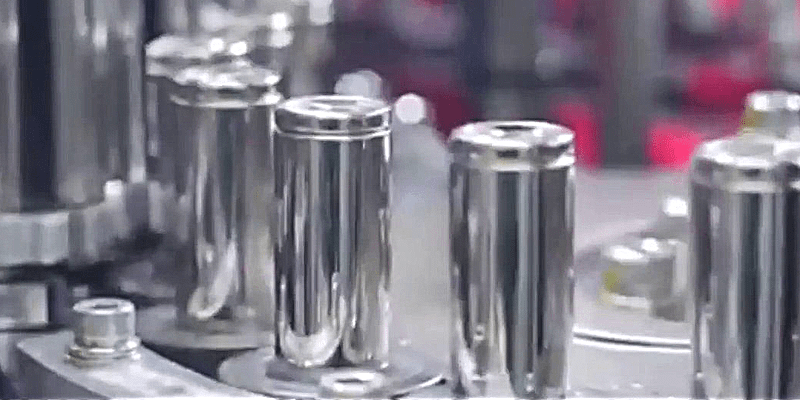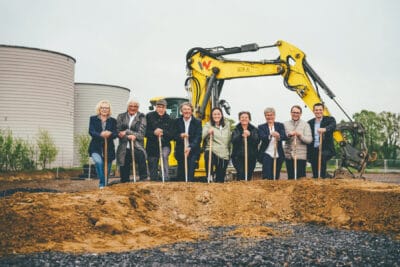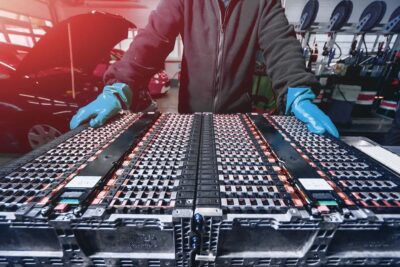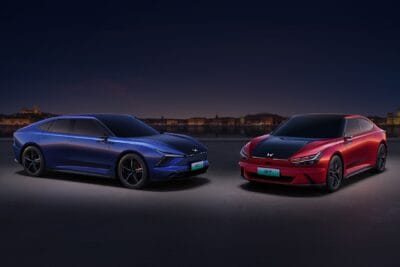Tesla is ordering battery manufacturing equipment
According to a media report, Tesla has commissioned the South Korean company Hanwha to supply equipment for battery formation. This is probably equipment that Tesla is already ordering for its intended cell production.
According to the Korea Times, a Hanwha manager is said to have confirmed that the company recently signed a supply contract for the battery formation equipment. These are to be delivered first to the Tesla factory in Fremont, California, and later to the Gigafactories in Nevada, China and Germany.
Battery formation is one of the last steps in cell production, where the cells that have just been assembled are charged and discharged for the first time. In this phase, in which the newly assembled battery cell is virtually activated, very high voltage and current accuracy are essential to ensure that the battery cell also achieves the specified service life. This process, therefore, has a significant influence on the quality and cost of the battery and usually takes several hours.
In addition to battery formation equipment, Hanwha also manufactures other machines used in battery cell production – such as stacking, tab welding or bag forming machines. Whether the Korean company will also supply Tesla with such devices is not known at present – the media reports only mention the battery formation equipment. There is now speculation there whether Hanwha for its part will enter the battery business with the existing machine know-how.
Tesla may announce more on the plans for its battery cell production at the ‘Battery Day’ scheduled for the third week of May. The machines now ordered would be a crucial component for large-scale production. Up to now, Tesla has been primarily concerned with the development of new cell chemistries and only then with the assembly of the cells into battery modules and packs. The construction of the cells themselves (and the know-how about the machines) is in the hands of still partner Panasonic in Gigafactory 1 and the other cell suppliers LG Chem and CATL for Gigafactory 3 in China.
Meanwhile, the battery research team at Tesla in Canada is reporting on a possible new approach for more powerful battery cells. This is a hybrid anode design in which lithium metal is plated on graphite, which should increase the energy density by 20 per cent compared to conventional lithium-ion cells. The aim is to combine the durability of lithium-ion cells and the energy density of lithium metal cells in a new type of cell.
The cells devised by Jeff Dahn’s team also use an electrolyte adapted to the new cell chemistry. With conventional electrolyte, his test pouch cells with hybrid graphite lithium metal anodes fell below 80 per cent of their capacity in less than 15 cycles. With a double salt electrolyte and an optimized mechanical pressure, he says, the number of cycles has already been 150.
“If an electric vehicle can achieve a range of 400 km with a conventional lithium-ion battery, hybrid cells could enable a range of 480 km,” the report says. “By limiting the upper cut-off voltage of hybrid cells for operation in lithium-ion mode, the average cell voltage and the capacity supplied are reduced. As a result, operating a hybrid cell in lithium-ion mode delivers an energy density of 530 Wh/l, which is about 25 per cent less than a conventional lithium-ion cell.
As is often the case, the developments of the Canadian Tesla developers are only at an early stage. Even 150 complete cycles are not sufficient for practical use in electric cars – the service life of one million miles targeted by Tesla cannot yet be achieved.
koreatimes.co.kr, electrek.co (both Hanhwa), teslarati.com, electrek.co, sciencedirect.com





1 Comment